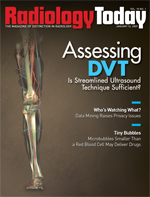
January 12, 2009
Cost Analysis — What You Can’t Afford Is a PACS That Doesn’t Fit
By Jim Knaub
Radiology Today
Vol. 10 No. 1 P. 6
How much will that PACS cost?
Define cost. Think about it in broader terms than just the number of dollars required to acquire and implement a system in your organization.
If you are the person tasked with making such a decision, part of any sane cost definition includes sleep lost, radiologists angered, service response headaches, system reliability, disruption of care in your facility, nights disturbed, weekends ruined, and hair pulled out. Those are real costs, even if your accounting department may not recognize them. The lower those types of costs, the more dollars you are willing to spend and still consider the transaction a bargain.
While smart management will pay more to get a quality PACS that meets its needs, no one likes paying more than is needed for anything. While there tends to be truth in the adage “you get what you pay for,” you don’t necessarily have to pay more for essentially the same features, functionality, and reliability in a PACS. The exhibit halls at RSNA 2008 contained dozens of PACS companies—large ones, small ones, new ones, old ones, more expensive ones, and less expensive ones. Among each of these groups, there are better systems and those that are not as good.
Finding a PACS that will work well for your facility requires some work, such as the following:
• Identify what features and functionality you need in your facility—now and reasonably into the future.
• Find several companies that seem to meet those requirements.
• Talk with them at length about service and support.
• Start the discussion about cost and negotiate.
Down the List
If you discuss how to buy PACS with industry experts, you’ll likely see more bullet points added to the above list and their order may be rearranged to some degree. That’s OK. The intent here isn’t outlining the foolproof way to get the best possible PACS deal. The point here is that focusing on the price does not belong at the top of the list for selecting a PACS.
For example, the University of Nebraska Medical Center recently replaced its PACS, selecting McKesson to replace its previous PACS provider.
“We installed a competitor’s PACS in 2002, and our radiologists and referring physicians struggled with the cumbersome workflow and slow image download,” said radiology director Chuck Lakso in a press release announcing the switch. “The ineffective communication tools hindered productivity, and the modality-based PACS became the root of many problems, including physician retention and recruitment. It was obvious that our institution’s evolving needs and user demands had outpaced the abilities of our initial PACS system, even with all of the vendor-recommended upgrades.”
Lakso’s message is clear: If a system doesn’t do what you need it to do, it’s not a true bargain, regardless of price. High price does not automatically mean high quality.
It you talk with imaging colleagues about replacing a PACS in their facility, their stories will focus on poor functionality, workflow, or support far more often than cost. You certainly can’t ignore cost, but when purchasing or replacing an imaging network, the first step is finding the one that will best do what you need it to and then using your best negotiating skills to obtain it at the best price you can. PACS isn’t like that ill-fitting sweater you received as a holiday gift; you can’t just exchange a PACS because you have the receipt.
— Jim Knaub is editor of Radiology Today.

